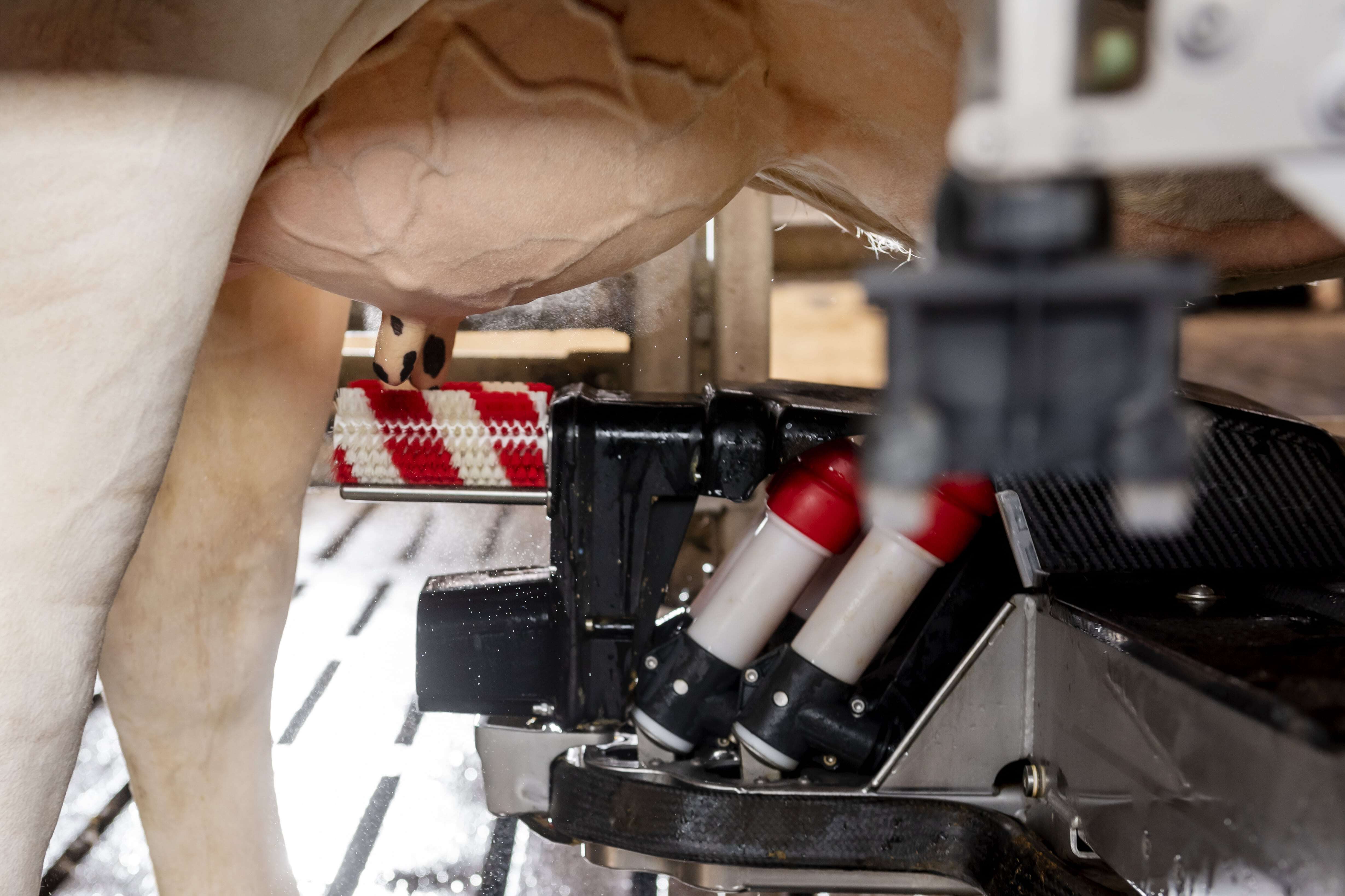Udder problems often result from a combination of issues such as heat stress, which weakens immunity, and a humid environment. Yet, according to Dr Piepers, mastitis can largely be prevented if the main risk factors are kept under control. “Good udder health starts with properly functioning equipment, a careful milking routine, correct technique, and comfortable, clean bedding.”
Step by step toward healthier udders: how to prevent mastitis

Every dairy farmer knows the pattern: as soon as the weather turns warmer and more humid, more cases of mastitis start appearing in the barn. “If the milk recording report shows that more than 15% of your cows have elevated somatic cell counts, it’s time to take action,” advises veterinarian Arnout Patyn. “Sound the alarm as well if your bulk tank somatic cell count exceeds 250,000 cells per milliliter.” Dr Sofie Piepers, udder health specialist at Ghent University, adds: “In herds with multiple risk factors, warm and humid conditions can provide just the extra push that turns a subclinical infection into visible mastitis. Those risk factors lie in the milking routine, milking technique, bedding, and the functioning of the milking machine. It’s crucial to address as many of them as possible.”
Udder health depends on multiple factors
Milking routine – hygiene and timing are key
“Teats must be completely clean, and the teat orifice free from manure,” explains Dr Piepers. “If not, bacteria are introduced into the udder during milking. Thorough pre-foaming and wiping each teat with a dry paper towel can prevent this.”
The time between stimulation and attaching the cluster is critical. “About 20% of the milk is stored in the gland cistern and flows out immediately once milking begins. The remaining 80% stays in the udder tissue and is only released after the cow produces oxytocin.”
The 60-second rule
Pre-stimulation triggers oxytocin release, which takes around 60 seconds to reach the udder via the bloodstream. If the milking unit is attached too early, there is vacuum but no milk flow – causing unnecessary stress on the teat. According to Dr Piepers, every 30 seconds of ‘dry milking’ can reduce yield by 1.5 kilograms of milk per session.
Signs of overloading include swollen or calloused teat ends. “If the vacuum overstretches the teat sphincter, it remains open longer after milking, allowing bacteria to enter,” she warns. Her advice: wait at least 60 seconds between pre-stimulation and attaching the milking cluster.
In practice, this means preparing five to six cows first, then returning to the first one to attach the unit.
The milking machine: your best ally
According to Arnout Patyn, overcrowding can also contribute to udder problems. “Cows should remain standing for at least 30 minutes after milking. If there’s no space at the feed fence, they’ll lie down too soon – when the teat canal is still open.”
After milking, teats should not appear purple or indented. If they do, the milking machine is likely misadjusted. Regular testing, such as wet milking measurements, helps identify problem areas. Replace rubber liners every 2,500 milkings, and silicone ones slightly later.
Bedding and cow comfort
“An ideal cubicle has a dry mattress topped with sawdust, cleaned two or three times per day,” says Dr Piepers. She views the switch from bulk sawdust to vacuum-packed sawdust positively. “Klebsiella bacteria sometimes survive in untreated sawdust, but the vacuum process eliminates them.”
Never store sawdust at the cow’s head area respiration moisture encourages bacterial growth.
Deep-bedded cubicles filled with recycled manure solids are less ideal. “The material should contain at least 65% dry matter and be hygienically treated by heating to 70°C for one hour. It’s often only 35% dry,” she explains. To keep bedding dry and stable, apply thin layers (about 5 cm) regularly rather than refilling them all at once.
Lime can help reduce bacterial growth, but not all types work equally well. “Some absorb too much moisture and keep the bed wet; others dry out and harden, damaging teats. Lime also neutralizes the acidity of teat dips, reducing their effectiveness.” She therefore recommends using unhydrated lime.
A structured approach: work with a step plan
“To manage both existing and new infections, take a structured approach,” says Patyn. “Don’t focus on just one area work with a seven- or ten-step plan.”
Collect milk samples, when necessary, even preventively. “If a cow repeatedly shows high cell counts but no symptoms, test a quarter sample. Identifying the causative bacteria helps target the right solution. Staphylococcus aureus often points to infection during milking, while E. coli indicates environmental sources such as bedding.” Accurate diagnosis leads to effective action.

